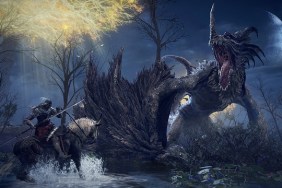Kills space bugs. Dead.
Japanese game development studios have had a hard time staying relevant in Western markets. The exchange rate on oversized swords, gratuitous fist-pumping, and the ubiquitous spiky blue hair just isn’t what it used to be. Folks in the West want big explosions, large muscles, oodles of gore, sepia-toned backdrops, and lots and lots of shooting.
[image1]More than any other Japanese publisher and developer, Capcom seems to understand this. If not for the telltale dramatic flair during cinematic sequences, Lost Planet and its upcoming sequel could pass for games homegrown in the land of supersized guns and supersized action.
Lost Planet 2 taps into what Western gamers want. The large, nasty space bugs are back, and you are again blasting them to pieces of space ichor. It takes its place comfortably and confidently among games like Gears of War and Killzone 2, and it forges ahead with new co-op features comparable to what’s found in Left 4 Dead and Borderlands. Lost Planet 2 isn’t your father’s Japanese-made game. It’s the sign of an industry thinking bigger and more globally.
While you will find enough mech suits to make any Japanophile drool, they look and feel much more like Ripley’s suit at the end of Aliens than anything found in the Gundam or Macross franchises. You instantly feel like a badass when you jump into one, and there’s enough variety in the types of suits that you’ll find plenty to experiment with in terms of mobility and firepower. You can also swap out the weapons on the suits or detach the heavy weapons to use on foot for unassisted badass-itude. Even outside of a mech suit, your characters wear bulky body armor and can nimbly leap around with the assistance of a grappling hook.
Like the first Lost Planet, there’s no shortage of big weapons and no dearth of even bigger things to shoot them at. Bosses are enormous, and the sense of scale is on par with some of the best fights in the God of War series. Weak points are again signaled by glowing orange areas (evolutionary mistake, anyone?), so boss fights generally mean finding the biggest, heaviest gun you can and blasting away whenever you see orange.
[image2]In the three episodes I played, enemies and environments changed frequently and kept things interesting. There are still some minor control annoyances that have carried over from the first game (for now), but they’re nothing that can’t be overcome by finding a bigger, badder gun or mech suit.
Cooperative play is Lost Planet 2’s biggest upgrade from its predecessor. The entire campaign is structured around four-person missions, and like Left 4 Dead, AI friends will fill in when your real friends are off getting manicures (playing games all the time is absolute hell on your nails, am I right, guys?). The mission loadout screen works similar to other co-op games where you can join or create a lobby, wait around for folks to join in, and then proceed to shoot big bugs together.
Thermal energy is put to more varied use this time around and is a sort of a universal currency for doing just about any special action in the game from healing to repairing to opening chests. You can also share thermal energy with your teammates by tossing it to them in conveniently small bundles.
You also share a set number of Battle Points with your teammates. You earn Battle Points by taking over waypoints and performing other feats, and you consume Battle Points by respawning at those waypoints. Once you run out of Battle Points, your game is over. This limits your number of respawns (and gives you one more reason to get pissed off at noobs).
[image3]Lost Planet 2 also revives its multiplayer suite from its previous iteration. While I wasn’t able to try them for myself, I was pleased to see that deathmatch, team deathmatch, and zone capture games are all making their return. In addition, the levels and unlockables you earn in the story campaign apply to your multiplayer character. The upshot is that this gives some added incentive to replaying the campaign mode. Rather than feeling like you’re just doing a big favor for a friend out of the sheer goodness of your heart by replaying those early levels, you’ll also be banking more unlocks for your multiplayer game. Viva la self interest!
It also should be said that Lost Planet 2 looks beautiful. Motion blur is used liberally but effectively, and even though the color palette is muted, the wide array of environments and attention to detail helps to avoid the sense of drabness. In the three episodes I played, I saw a lush jungle environment replete with vegetation and watery vistas, a dense urban slum in the vein of Killzone 2’s Helghan, and a fast-moving train making its way across a broad, alien desert.
The first Lost Planet was a promising attempt by a Japanese developer to make a Western-style shooter. Lost Planet 2 looks to be a surprisingly astute refinement of the first entry and is taking a bold risk by emphasizing cooperative play. “Gritty” and “realism” could be the new catchwords of a revitalized Japanese game industry, and Lost Planet 2 has made it crystal clear that shooters are no longer the sole domain of Western studios. Look for Lost Planet 2 to rear its giant-bug-slaying head this May.







